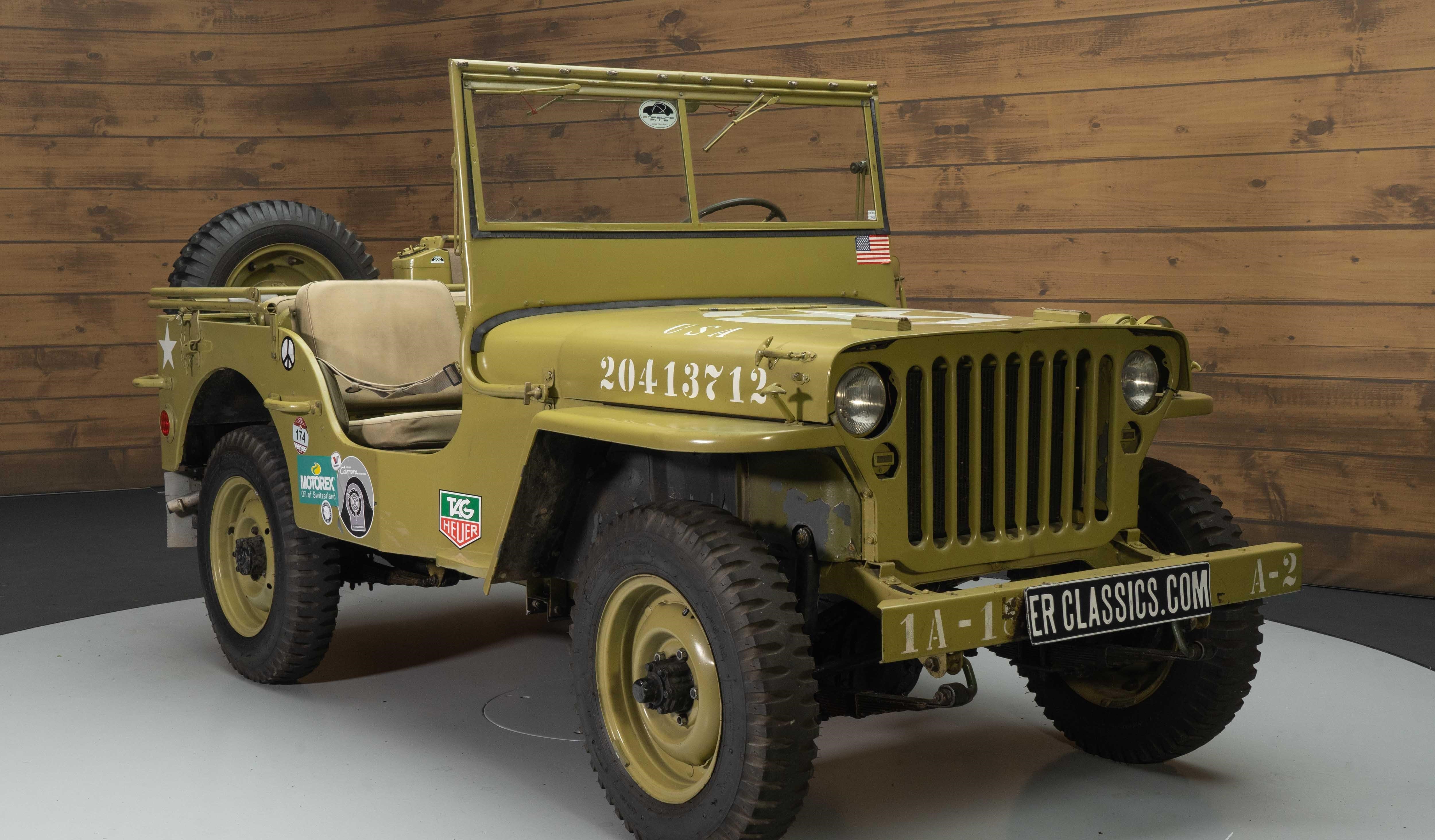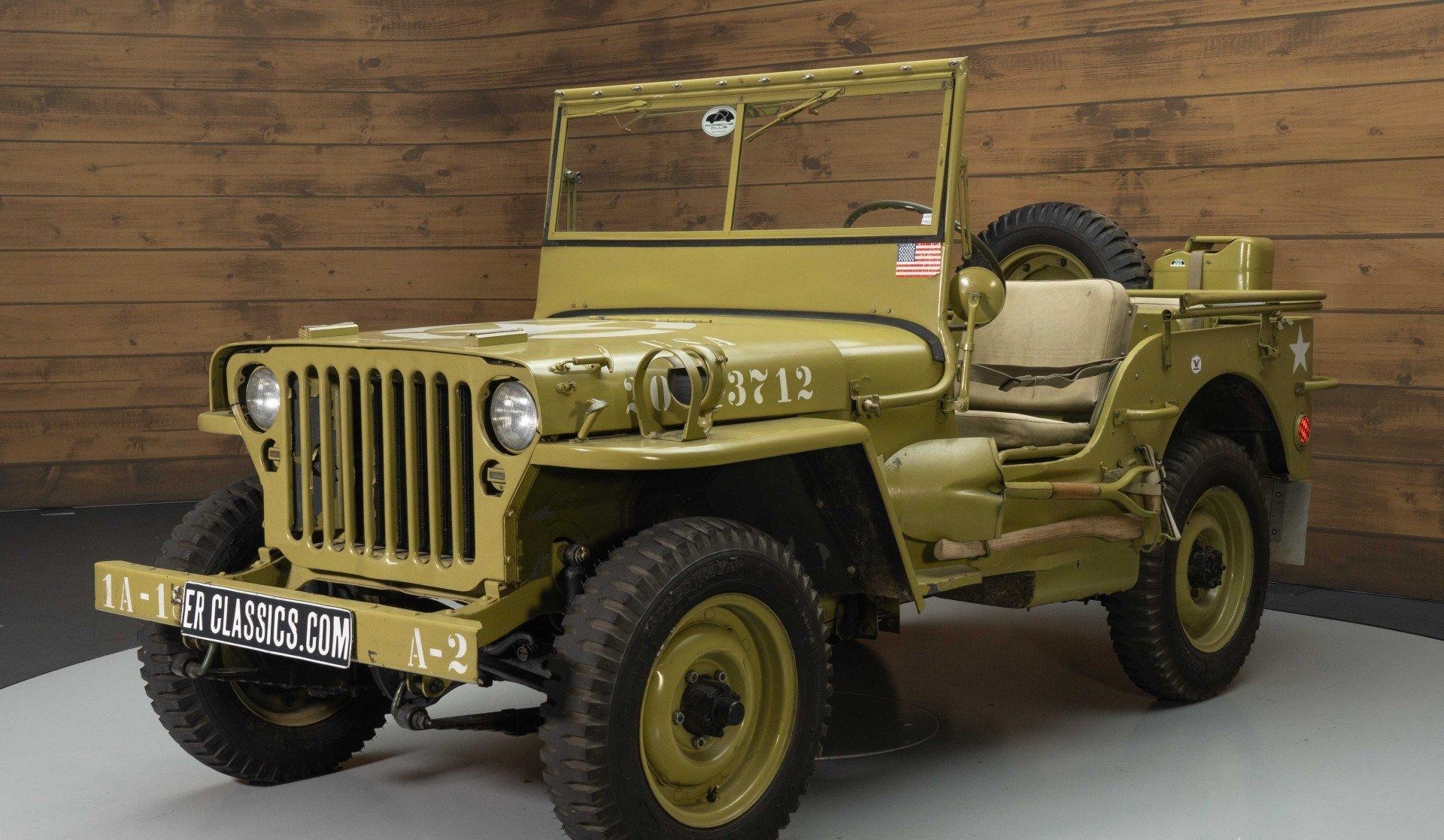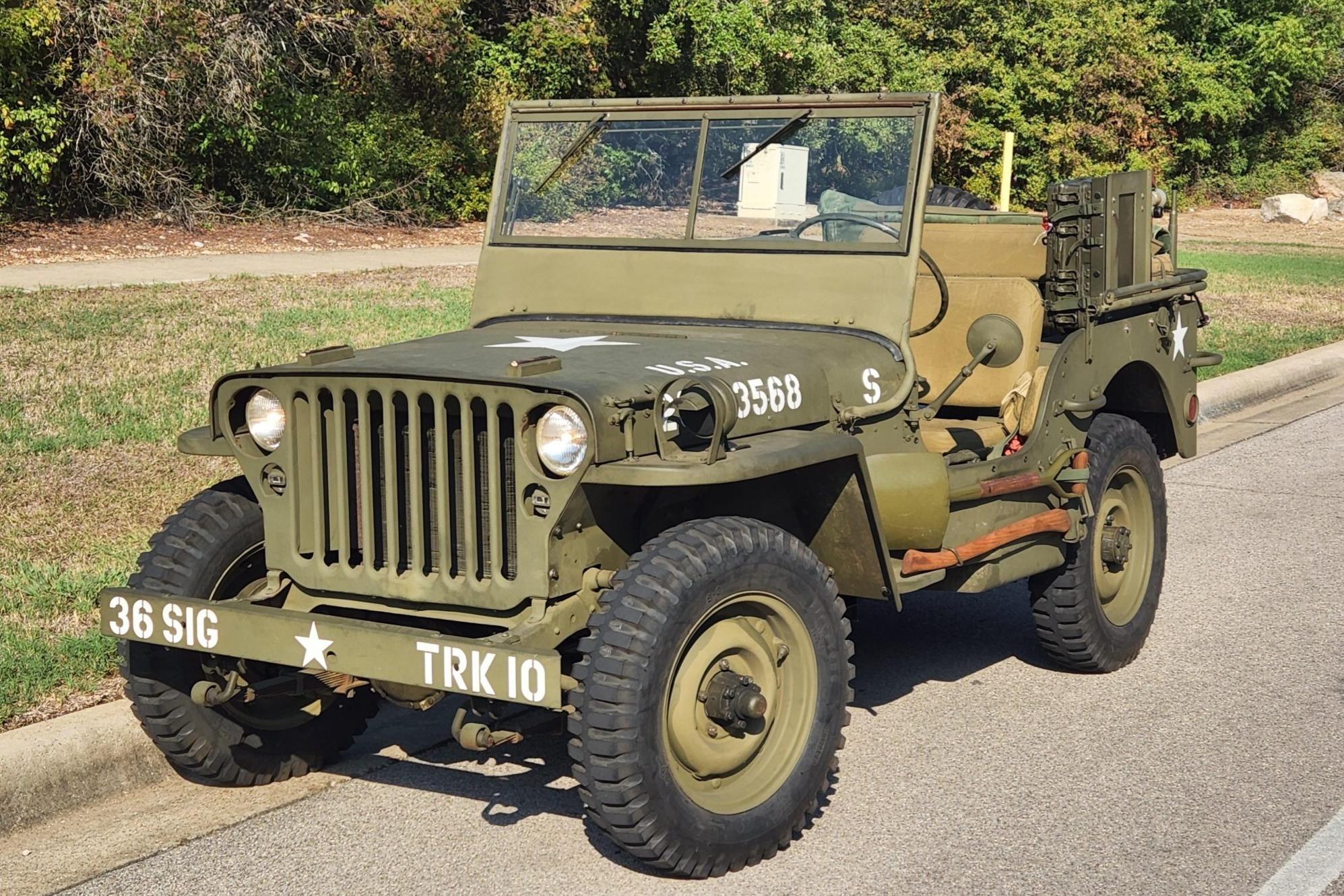1944 Ford ARMY

The descriptions of the Classic Cars in the Directory were partly generated or supplemented with the help of artificial intelligence (AI). The content may occasionally not always be entirely accurate or factually correct despite careful checking.
The FORD JEEP ARMY 1944, also known as the Willys MB or Ford GPW, is a compact military vehicle that was produced during World War II. It is widely recognized as one of the most iconic vehicles of its time, and its design and technology have influenced many modern off-road vehicles.
The Jeep’s power comes from a Willys L134 engine, which is a 2.2-liter, four-cylinder engine that produces 60 horsepower and 105 lb-ft of torque. The engine is mated to a T-84 transmission with a three-speed manual gearbox. The Jeep sits on 16-inch steel wheels and has a front and rear track of 47.25 inches.
The Jeep’s suspension is a solid-axle design with leaf springs at each corner. This provides excellent off-road capability and stability on rough terrain. The braking system consists of 9-inch drums at each wheel and operates through a hydraulic system.
The Jeep is designed to be a versatile vehicle that can carry personnel and equipment over a variety of terrains. It has a curb weight of approximately 2,315 pounds and can carry up to 600 pounds of cargo. The vehicle can also be outfitted with a variety of accessories, including a machine gun mount on the rear, a radio, and a winch.
The Jeep’s body is made of stamped steel and is designed to be lightweight and durable. The four-wheel drive system allows the Jeep to traverse rugged terrain, and the low gearing of the transmission provides excellent off-road crawling ability.
The Jeep’s interior is Spartan and utilitarian, with a simple dashboard, bench seats, and minimal creature comforts. The vehicle is designed to be easy to maintain in the field, with easy access to key mechanical components.
Overall, the FORD JEEP ARMY 1944 is an excellent example of the military’s focus on rugged, versatile vehicles that can perform a variety of tasks in challenging environments. Its design and technology have stood the test of time, and it remains a popular vehicle for off-road enthusiasts and collectors today.
Milestones
- In early 1944, Ford Motor Company began production of the Willys MB Jeep for the U.S. Army. - The Ford-built Jeeps were designated as GPW (Ford designation) and were virtually identical to the Willys MB. - Production of the Ford Jeeps peaked in 1944 when the company produced 281,349 vehicles for the war effort. - Ford also produced the G-188 research engine for the Army, which was a key step in the development of the next Jeep engine. - Ford's production of the Jeep helped to provide the U.S. military with the transportation needed to win the war, allowing for flexible and rapid deployment of troops, supplies and equipment. - The Jeep became an iconic symbol of American ingenuity and ruggedness during World War II, and its legacy has continued to inspire the development of the modern SUV.Technical
- Model: Ford GPW - Year: 1944 - Engine: 2.2L L-head Inline 4 - Horsepower: 60 hp - Transmission: 3-speed manual - Four-wheel drive - Max speed: 65 mph - Wheelbase: 80 inches - Ground clearance: 7.4 inches - Curb weight: 2,315 lbs - Fuel capacity: 15 gallons - Cargo capacity: 600 lbs - Towing capacity: 2,000 lbs - Brakes: Hydraulic four-wheel drum brakes - Suspension: Front and rear leaf springs - Body type: Open-top, four-seater - Windshield: Foldable - Production quantity: Over 277,000 units during WWII.



